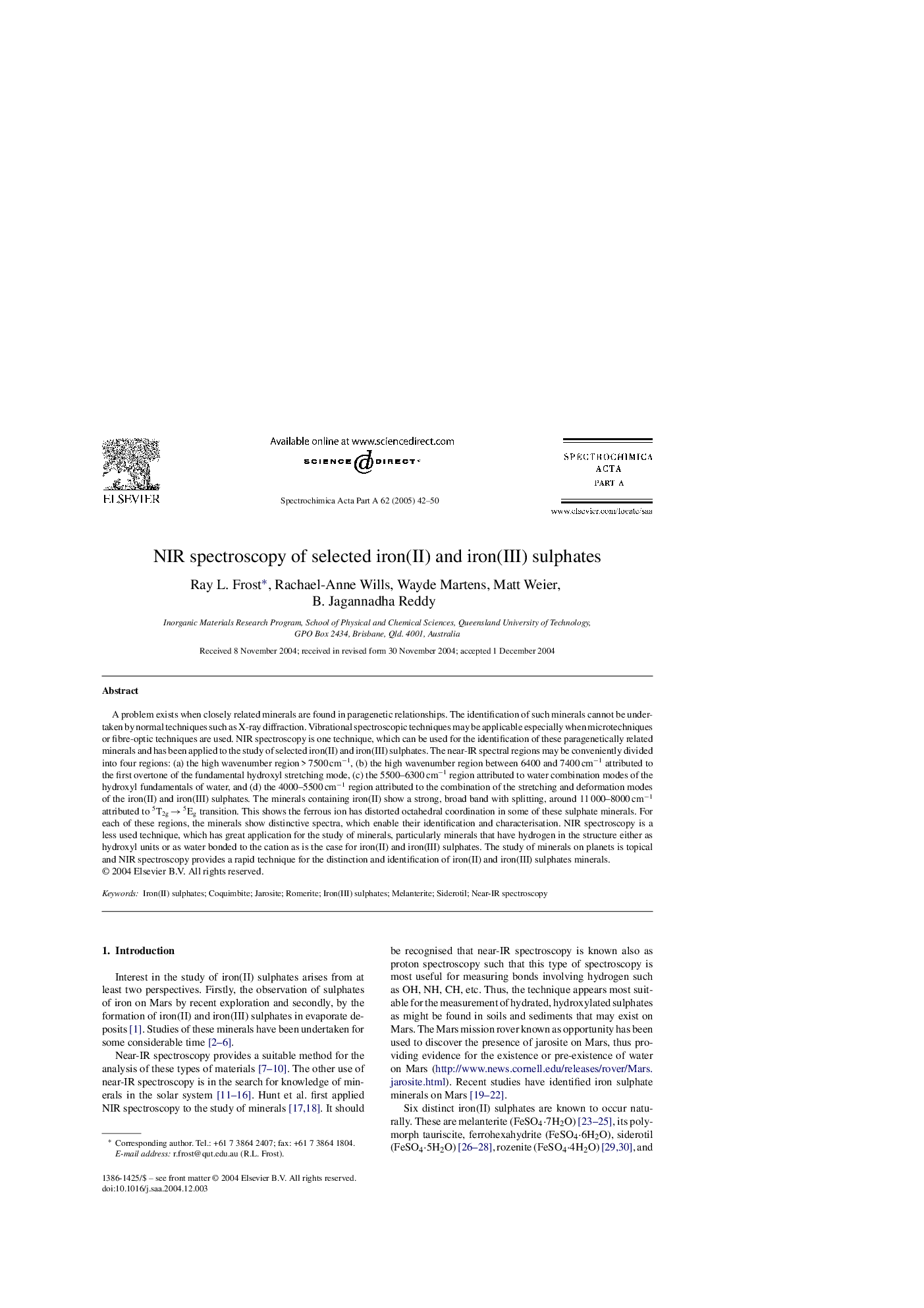| Article ID | Journal | Published Year | Pages | File Type |
|---|---|---|---|---|
| 9756985 | Spectrochimica Acta Part A: Molecular and Biomolecular Spectroscopy | 2005 | 9 Pages |
Abstract
A problem exists when closely related minerals are found in paragenetic relationships. The identification of such minerals cannot be undertaken by normal techniques such as X-ray diffraction. Vibrational spectroscopic techniques may be applicable especially when microtechniques or fibre-optic techniques are used. NIR spectroscopy is one technique, which can be used for the identification of these paragenetically related minerals and has been applied to the study of selected iron(II) and iron(III) sulphates. The near-IR spectral regions may be conveniently divided into four regions: (a) the high wavenumber region > 7500 cmâ1, (b) the high wavenumber region between 6400 and 7400 cmâ1 attributed to the first overtone of the fundamental hydroxyl stretching mode, (c) the 5500-6300 cmâ1 region attributed to water combination modes of the hydroxyl fundamentals of water, and (d) the 4000-5500 cmâ1 region attributed to the combination of the stretching and deformation modes of the iron(II) and iron(III) sulphates. The minerals containing iron(II) show a strong, broad band with splitting, around 11 000-8000 cmâ1 attributed to 5T2g â 5Eg transition. This shows the ferrous ion has distorted octahedral coordination in some of these sulphate minerals. For each of these regions, the minerals show distinctive spectra, which enable their identification and characterisation. NIR spectroscopy is a less used technique, which has great application for the study of minerals, particularly minerals that have hydrogen in the structure either as hydroxyl units or as water bonded to the cation as is the case for iron(II) and iron(III) sulphates. The study of minerals on planets is topical and NIR spectroscopy provides a rapid technique for the distinction and identification of iron(II) and iron(III) sulphates minerals.
Keywords
Related Topics
Physical Sciences and Engineering
Chemistry
Analytical Chemistry
Authors
Ray L. Frost, Rachael-Anne Wills, Wayde Martens, Matt Weier, B. Jagannadha Reddy,
